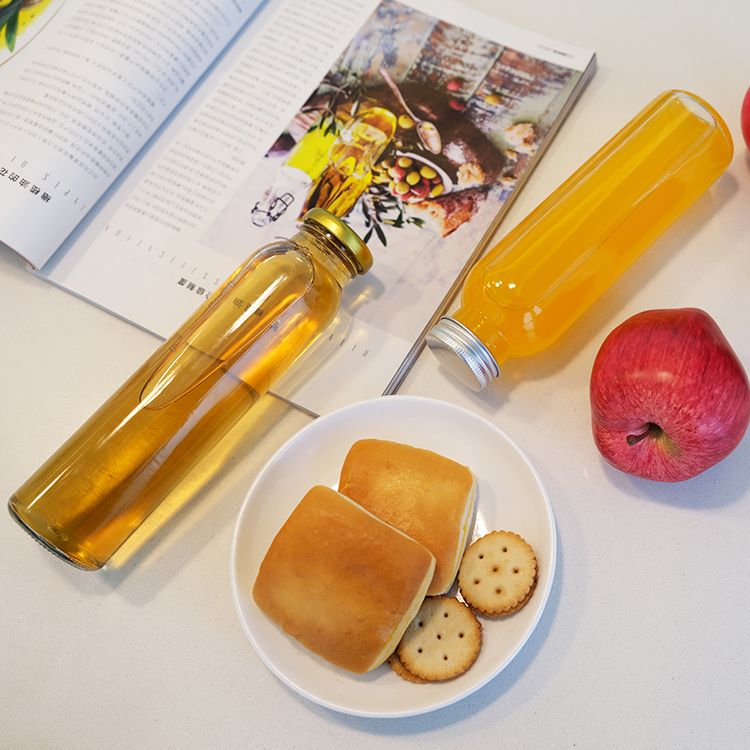Do Honey, Candies, and Jams Require Glass Bottles?
Do Honey, Candies, and Jams Require Glass Bottles?
The simple answer is no, not universally. While candies typically do not necessitate glass bottles, honey and jams are best suited for them. Let’s explore the reasons behind these packaging choices.

Candy Packaging: Plastic Film, Foil, and Paper
Candies, beloved sweet treats, are predominantly wrapped in individual portions using materials like plastic film, aluminum foil, or paper. This approach serves multiple purposes: it enhances the visual appeal of each piece, and crucially, allows multiple candies to be conveniently grouped within a single outer package for easy consumption. Glass jar packaging for candy is uncommon in retail settings. When utilized, glass jars primarily function as decorative containers, perhaps repurposed as candy dishes, rather than essential primary packaging.
Honey Packaging: Glass vs. Plastic – A Strong Case for Glass
Honey packaging commonly features either glass or plastic bottles. However, from the perspective of a glass packaging manufacturer, the use of plastic bottles for honey is strongly discouraged. This stance is reinforced by feedback from honey producers who are meticulous about their packaging. They emphasize that glass is the optimal choice because it is chemically inert and won't interact with honey's components. Conversely, long-term storage in plastic can reportedly impart a sour taste to the honey.
Furthermore, honey benefits aesthetically from being in very clear or white glass bottles. Glass accurately showcases honey's natural color, often enhancing its visual appeal, whereas plastic bottles frequently fail to represent the true hue effectively. While I am not a honey producer to verify all claims firsthand, the logic presented aligns with researched information.
Research indicates that certain plastic bottles (e.g., PET - polyethylene terephthalate) can leach trace amounts of chemicals like antimony and residual metal catalysts, particularly under prolonged storage or elevated temperatures. Although typically within regulated safety limits, potential long-term health risks remain a concern.
Plastic Bottles' Impact on Honey Quality:
As a natural product, honey is sensitive to its environment. Plastic's lower barrier properties can lead to moisture loss, affecting crystallization and taste. Additionally, plastics may release odors at higher temperatures, compromising honey's delicate flavor profile. Crucially, extended storage in plastic is inadvisable as it inevitably alters the honey's flavor, potentially diminishing its taste and nutritional value, and in severe cases, posing health risks. Therefore, avoiding honey packaged in plastic bottles for long-term storage is recommended.
Benefits of Glass Honey Bottles:
?Preservation: Honey possesses natural antimicrobial properties. Glass bottles provide an excellent barrier against moisture and external odors, maintaining purity and flavor. Their superior seal helps preserve freshness over time.
?Environmental Appeal: With growing eco-consciousness, glass is favored for its high recyclability and lower long-term environmental burden compared to plastics.
?Visual Appeal: Glass perfectly displays honey's inviting color, enhancing product image and stimulating consumer desire to purchase.
Jam Packaging: Glass Predominates Over Plastic
Jam, another popular preserve, is often found in either glass jars or plastic bottles. However, glass is overwhelmingly the preferred choice for most jams. Why is this?
?Freshness Retention: Studies, including research from Nigeria on mixed fruit jams, demonstrate differences in how packaging affects quality. Gel consistency was best maintained in glass jars and rigid plastic trays, while becoming thinner in flexible polyethylene bags.
?Safety During Production: Jam is filled hot and requires vacuum sealing for preservation. While plastic can be sealed, the material's nature poses risks when exposed to heat. Plastic can potentially leach plasticizers, which are health concerns. Consequently, major manufacturers typically opt for safer glass packaging.
?Preservation Needs: Although jam's high sugar content (from both fruit fructose and added sucrose) acts as a natural preservative, glass packaging is still essential. It provides a hermetic seal crucial for preventing airborne bacterial contamination and maintaining long-term freshness. Glass jars with well-designed, reusable lids ensure the jam retains its original flavor even after opening.
?Sensory Quality Impact: Glass offers exceptional display qualities with minimal color distortion, perfectly showcasing the jam's vibrant color and texture. This visual appeal significantly enhances product attractiveness and consumer purchase intent. Plastic bottles, conversely, may become opaque or scratched over time, detracting from the product's appearance.
?Environmental Considerations: Similar to honey packaging, plastic bottles for jam face environmental challenges. Despite advantages like being lightweight and shatter-resistant, plastics generally have lower recycling rates and reusability compared to glass, contributing more significantly to environmental strain.